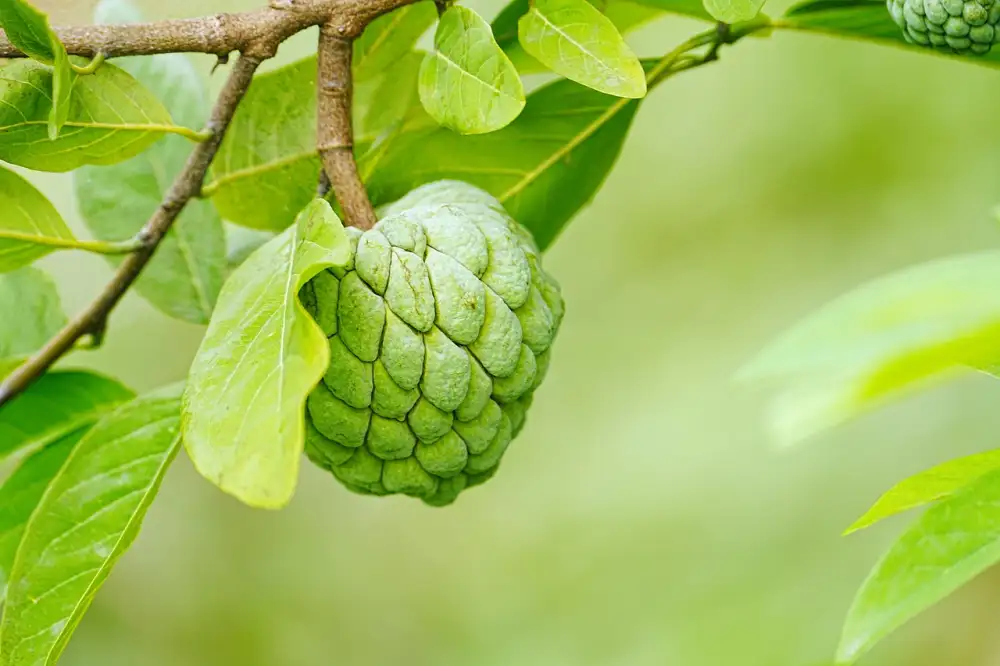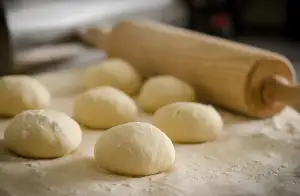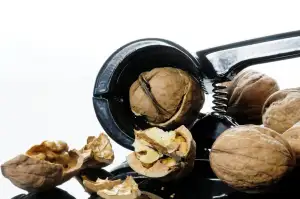Indulge in Creamy Perfection: Discover How to Make Custard like a Pro

Custard is a classic dessert that has been enjoyed for centuries. With its smooth and creamy texture, custard is the perfect indulgence for those with a sweet tooth. Made from simple ingredients like milk, eggs, and sugar, custard is a versatile treat that can be enjoyed on its own or used as a base for other desserts. Whether you prefer it warm or chilled, custard is sure to satisfy your cravings and leave you wanting more. In this article, we will explore the art of making custard from scratch and share some tips and variations to help you create the perfect creamy delight. So get ready to indulge in creamy perfection as we discover how to make custard like a pro!
Ingredients for Custard
To make a deliciously creamy custard, you will need the following ingredients:
1. Milk: Use whole milk for a rich and velvety texture. You can also use a combination of milk and cream for an even creamier custard.
2. Sugar: Granulated sugar is typically used to sweeten the custard. Adjust the amount according to your preference.
3. Egg yolks: The yolks provide richness and help thicken the custard. Make sure to use fresh eggs for the best results.
4. Vanilla extract: This classic flavoring enhances the taste of custard. You can use either pure vanilla extract or vanilla bean paste.
5. Optional flavorings: Get creative with your custard by adding additional flavors such as chocolate, caramel, citrus zest, or spices like cinnamon or nutmeg.
Ensure that all ingredients are of high quality to achieve a truly indulgent custard experience.
Step-by-step Instructions for Making Custard
a. Heat the milk: In a saucepan, heat the milk over medium heat until it reaches a simmer. Do not let it boil.
b. Combine sugar and egg yolks: In a separate bowl, whisk together the sugar and egg yolks until well combined and slightly thickened.
c. Temper the egg mixture: Slowly pour the hot milk into the egg mixture, whisking constantly to prevent curdling. This process is called tempering and helps to gradually raise the temperature of the eggs without cooking them too quickly.
d. Cook the custard mixture: Return the mixture to the saucepan and cook over low heat, stirring constantly with a wooden spoon or spatula. The custard is ready when it coats the back of a spoon and leaves a clear path when you run your finger through it.
e. Add flavorings (optional): At this stage, you can add vanilla extract, nutmeg, or any other desired flavorings to enhance the taste of your custard. Stir well to incorporate.
f. Strain and cool the custard: Remove from heat and strain the custard through a fine-mesh sieve to remove any lumps or cooked bits. Allow it to cool at room temperature for about 10 minutes before refrigerating for at least 2 hours or until completely chilled.
By following these simple steps, you'll be able to make creamy and delicious custard like a pro!
Heat the milk
Heat the milk is the first step in making a delicious custard. Start by pouring the desired amount of milk into a saucepan and placing it on medium heat. It is important to heat the milk slowly and gently to avoid scorching or boiling it. Stir the milk occasionally to prevent a skin from forming on top. Heating the milk allows it to infuse with any added flavorings and helps create a smooth and creamy texture in the custard. Once the milk is hot but not boiling, it is ready to be combined with other ingredients to make the perfect custard base.
Combine sugar and egg yolks
Combine sugar and egg yolks: In a separate bowl, whisk together the sugar and egg yolks until they are well combined. The sugar will help to sweeten the custard while the egg yolks will add richness and give it a smooth texture. Make sure to use fresh eggs for the best results. Whisking them together thoroughly will ensure that the sugar is evenly distributed throughout the custard mixture. This step is crucial as it helps to create a creamy and flavorful custard base.
Temper the egg mixture
Tempering the egg mixture is a crucial step in making custard. It involves slowly adding hot milk to the egg and sugar mixture to gradually raise its temperature without curdling the eggs. To temper the eggs, start by whisking the yolks and sugar together until pale and creamy. Then, slowly pour a small amount of hot milk into the egg mixture while continuously whisking. This will gently warm up the eggs without scrambling them. Repeat this process two or three times, gradually increasing the amount of hot milk each time, until all the milk is incorporated. Tempering ensures a smooth and silky custard texture, resulting in a luscious dessert that will leave your taste buds craving for more.
Cook the custard mixture
d. Cook the custard mixture
Once you have tempered the egg mixture, it's time to cook the custard. Pour the tempered egg mixture back into the saucepan with the heated milk. Place the saucepan over medium-low heat and cook, stirring constantly with a wooden spoon or whisk.
Continue cooking until the custard thickens and coats the back of the spoon. This process usually takes around 10-15 minutes, but be patient as rushing can result in lumpy custard.
It's crucial to maintain a gentle heat while cooking to prevent curdling or scrambling of eggs. If you notice any lumps forming, immediately remove from heat and vigorously whisk until smooth.
Remember that custard continues to thicken as it cools, so don't worry if it seems slightly runny at this stage. The goal is a smooth and creamy consistency that will set beautifully once chilled.
Once cooked, remove from heat and proceed to strain and cool the custard as per the next steps in our recipe guide.
Add flavorings (optional)
Once your custard mixture is cooked and thickened to perfection, it's time to add some delightful flavorings. While classic vanilla extract is always a crowd-pleaser, don't be afraid to get creative and experiment with other flavors. Some popular options include almond extract, citrus zest, or even a splash of liqueur for an adult twist.
To incorporate the flavorings, simply remove the custard mixture from the heat and stir in your chosen ingredient. Start with a small amount and taste as you go, adjusting according to your preference. Remember that flavors can intensify as the custard cools, so it's best to start with a subtle touch.
If you're feeling adventurous, try adding spices like cinnamon or nutmeg for a warm and comforting taste. For a more indulgent treat, consider folding in chocolate chips or chopped fruits like strawberries or peaches.
Remember that when adding flavorings, it's important to strain the custard again after incorporating them. This ensures a smooth and velvety texture without any lumps or bits of zest.
Adding flavorings is an excellent way to personalize your custard and make it truly unique. So go ahead and let your creativity shine in the kitchen!
Strain and cool the custard
Once the custard mixture has cooked to the desired consistency, it is important to strain it before cooling. Straining helps remove any lumps or bits of cooked egg that may have formed during the cooking process, resulting in a smooth and velvety texture.
To strain the custard, place a fine-mesh sieve or strainer over a clean bowl. Carefully pour the hot custard through the sieve, using a spatula or spoon to press it through if necessary. This will catch any solids and ensure a silky-smooth consistency.
After straining, allow the custard to cool at room temperature for about 30 minutes. Then, cover it with plastic wrap, making sure the wrap touches the surface of the custard to prevent a skin from forming. Transfer it to the refrigerator and let it chill for at least 2 hours or until completely cold.
Remember that custard thickens further as it cools, so don't worry if it seems slightly runny when you first strain it. It will set up nicely once chilled.
Straining and cooling are crucial steps in achieving perfect custard every time. So be patient and resist the temptation to rush this process. The end result will be a luscious and creamy dessert that is worth every minute of preparation.
Tips for Perfect Custard
1. Use a heavy-bottomed saucepan: A heavy-bottomed saucepan helps distribute heat evenly, preventing the custard from scorching or curdling.
2. Heat the milk slowly: When heating the milk, do it over low heat to avoid scalding or boiling. This gradual process ensures a smooth and creamy texture.
3. Whisk continuously: While cooking the custard mixture, whisk it continuously to prevent lumps from forming and ensure even cooking.
4. Remove from heat at the right consistency: Custard thickens as it cools, so remove it from the heat just before reaching your desired consistency to avoid overcooking.
5. Strain for a silky texture: To achieve a velvety smooth texture, strain the custard through a fine-mesh sieve to remove any lumps or cooked egg bits.
6. Chill thoroughly before serving: Allow the custard to cool completely at room temperature before refrigerating it. This step allows flavors to meld and enhances its overall taste.
7. Avoid overheating: Overheating can cause the custard to curdle or develop an eggy taste. Cook it gently and be mindful of temperature changes throughout the process.
8. Cover with plastic wrap: When chilling the custard in the refrigerator, cover it with plastic wrap directly touching its surface to prevent a skin from forming on top.
By following these tips, you'll be able to create perfectly smooth and luscious custards every time!
Variations and Serving Suggestions for Custard
Custard is a versatile dessert that can be enjoyed in various ways. Here are some delicious variations and serving suggestions to elevate your custard experience:
1. Fruit Compote: Top your custard with a vibrant fruit compote, such as strawberry or raspberry, for a burst of freshness and added sweetness.
2. Caramelized Sugar: Sprinkle a thin layer of sugar on top of the custard and use a kitchen torch to caramelize it. This creates a delightful crunchy texture that contrasts beautifully with the smoothness of the custard.
3. Spiced Custard: Infuse your custard with warm spices like cinnamon, nutmeg, or cardamom during the cooking process. This adds depth and complexity to the flavor profile.
4. Chocolate Ganache: Drizzle rich chocolate ganache over the chilled custard for an indulgent twist. The combination of creamy custard and velvety chocolate is simply irresistible.
5. Crème Brûlée: Transform your custard into a classic crème brûlée by sprinkling a layer of sugar on top and caramelizing it until golden brown. The crackling caramel crust provides a delightful contrast to the silky custard beneath.
6. Trifle: Layer cubes of sponge cake, fresh fruits, and custard in a glass dish to create a luscious trifle dessert. Top it off with whipped cream and garnish with nuts or chocolate shavings for an impressive presentation.
7. Mini Tartlets: Fill pre-baked tartlet shells with cooled custard for bite-sized treats that are perfect for parties or afternoon tea.
8. Bread Pudding: Use leftover bread slices soaked in custard mixture to make a comforting bread pudding. Bake until golden brown for a satisfying dessert that's perfect served warm with vanilla sauce.
Remember, when serving custards, they are best enjoyed chilled or at room temperature. Whether you choose to serve it plain or experiment with different variations, custard is a timeless dessert that never fails to delight the taste buds.
In conclusion, mastering the art of making custard will elevate your dessert game to new heights. With its velvety texture and rich flavor, custard is a true indulgence that can be enjoyed on its own or used as a base for other desserts. By following the step-by-step instructions and incorporating the tips mentioned, you can create creamy perfection every time. Experiment with different flavorings and serving suggestions to add your own personal touch. Whether it's a classic vanilla custard or a decadent chocolate version, custard is sure to impress your loved ones and leave them craving for more. So go ahead, embrace the magic of custard-making and let your culinary skills shine!
Published: 26. 02. 2024
Category: Recipes



